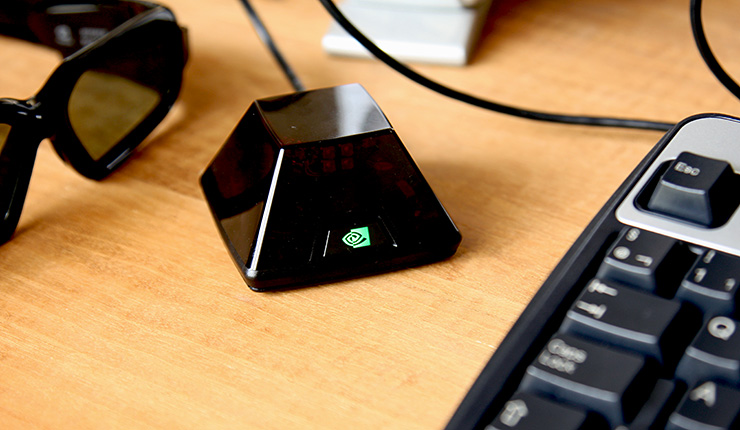Stereo 3D and stereoscopic technology
Stereo 3D and stereoscopic technology
 The term 'stereo 3D' means nothing less than to bring an extra dimension to your 3d gaming experience. Though your games are already processed in 3D, you look at them in 2 dimensions on your monitor, the X and Y axis. 3D stereo or 3D Vision is all about the perception of depth, the Z axis. To understand what exactly you experience when you put on those goggles, you need to understand the technology and what it does to the brain.
The term 'stereo 3D' means nothing less than to bring an extra dimension to your 3d gaming experience. Though your games are already processed in 3D, you look at them in 2 dimensions on your monitor, the X and Y axis. 3D stereo or 3D Vision is all about the perception of depth, the Z axis. To understand what exactly you experience when you put on those goggles, you need to understand the technology and what it does to the brain.
Hopefully you have two working eyes, each eye delivers slightly different pictures of the same situation you are looking at. The further an object is away, the less these 2 pictures will differ and the other way round, the nearer an object, the more different these two pictures will be. Combined your brain will create depth.
For your brain to perceive depth, we need two images. Let's do a very simple experiment. Look at your monitor please. Focus on the text of this article, in fact focus on this word : GURU3D
Now repeatedly close your left and then right eye-lid, in an alternating fashion.
You'll notice that once you close your right eye, your left eye will register GURU3D positioned somewhat more to the right, and vice versa once you close your left eye and look at it with your right eye to find the word position more to the left. Your brain will combine the two 'images' you receive from your eyes, and the difference in position of that word GURU3D is what is creating the perception of depth.
So with two different images we can invoke the perception of depth. And now we have some understanding in the underlying technology needed for real 3D gaming.
When you look in 3D stereo / 3D Vision towards your monitor, it will display two different pictures: one for the right and one for the left eye. These two pictures must show the situation, objects or whatever need depth from slightly different positions, just like it is in reality. So in addition to software (stereo driver) you will need some kind of hardware (e.g. stereo glasses). Now let us take a look at some 3D stereo technologies for the PC as there are several options to choose from:
Anaglyphic stereoglasses
Anaglyphic glasses are based on the idea of splitting an image into 2 pictures by taking only the red colors of a picture for the left and the green color for the right eye. (It is also common to use other colors, like blue or yellow). Both sub pictures show the scene from different perspectives. This however is not a preferred technology for the PC and especially PC gaming.
![]()
LCD Shutter glasses
Stereo 3D with shutter glasses is realized in the way that 50% of the number of rendered pictures will be used for the left, and the other 50% for the right eye. The technique used here is called 'time-sequential multiplexing' which will alternately display left- and right-eye images every time the computer refreshes (draws) the screen.
Synchronized to these alternating images the shutter glasses will work. They have 2 LCDs, one directly in front of each eye. Each LCD can block one eye's view of the screen. When an image for the left eye is drawn on the monitor, the LCD of the right eye will block the right eye's view and the other way round. If this is repeated fast enough (faster than can be perceived), and if the synchronization can be kept, then this will make you think you're seeing true 3D, tricking your brain.
![]()
Other technologies are VR-Helmets, these helmets have 2 small screens (most common used are TFTs/LCDs) in front of the eyes: one for the left and one for the right. By showing (you might have expected that) 2 slightly different pictures on each monitor, the user will experience a 3D feeling. And as of recently we have seen true 3D displays - beautiful technology, though full of compromises on quality and really expensive.
So what is the most effective method that is also affordable then? Well, anaglyphic glasses are ultra cheap, sometimes you even can get them for free with several magazines. But in a lot of scenarios you will see the application in wrong colors, it's just not ideal.
Shutter glasses are definitely the way to go in terms of quality, experience and price... but shutter glasses do have one main disadvantage: the so-called 'ghost effect'. Even though the LCD should block one eye's view on the monitor you can see "ghost images" of the monitor. This can be caused by either the LCD not blocking the view 100% but perhaps 95%, so that 5% of the light that is sent out by your monitor can reach your 'blocked' eye. Or the LCD does not block your view fast enough, so that the wrong eye can see the image on the monitor for a short time. If this ghost effect takes over then the whole stereo feeling gets messed up. So it's the manufacturers task to keep the ghost effect non-existent. We'll check that out.
Let's have a look at NVIDIA's implementation, based on shutter glasses.

